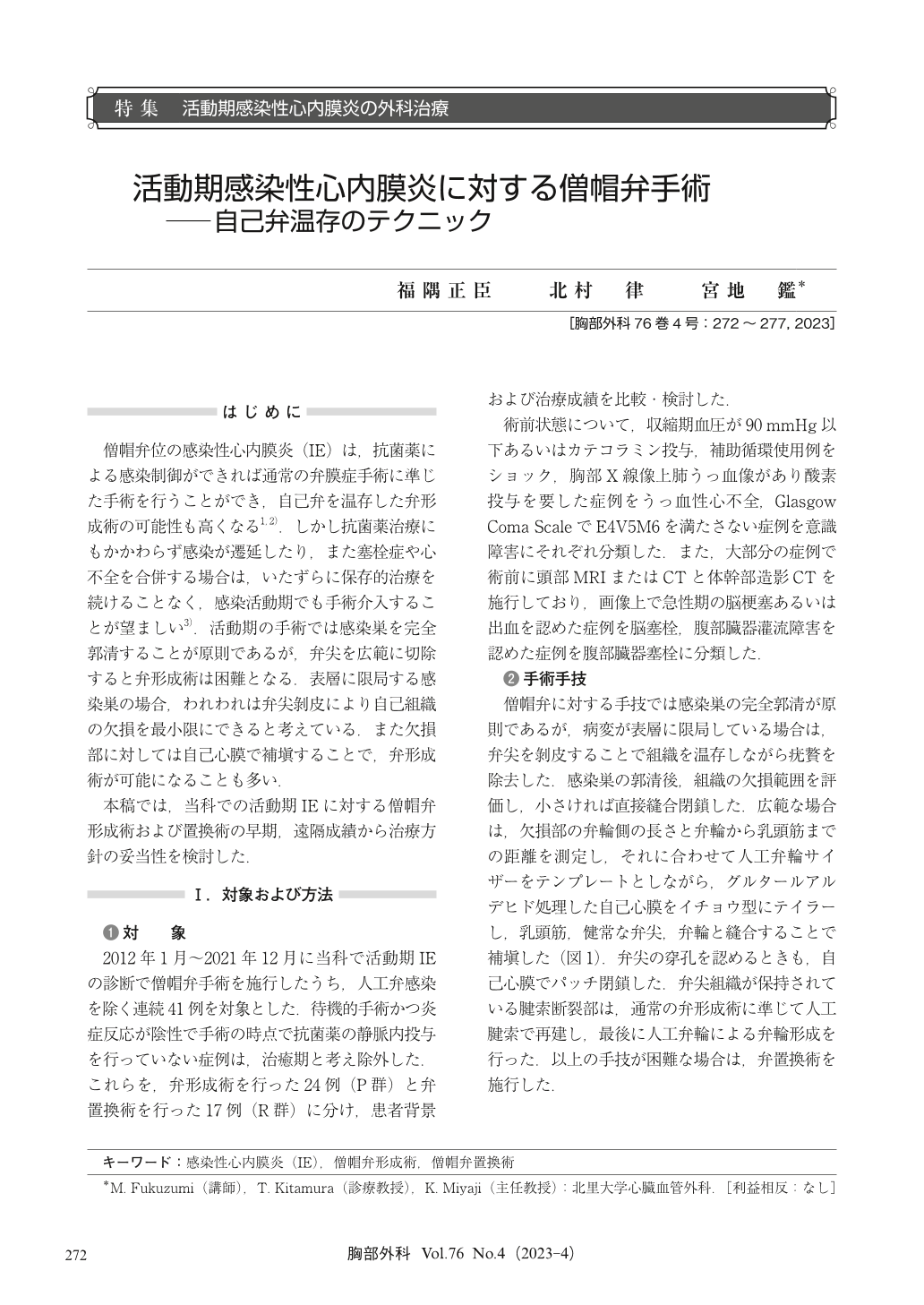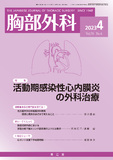Japanese
English
- 有料閲覧
- Abstract 文献概要
- 1ページ目 Look Inside
- 参考文献 Reference
僧帽弁位の感染性心内膜炎(IE)は,抗菌薬による感染制御ができれば通常の弁膜症手術に準じた手術を行うことができ,自己弁を温存した弁形成術の可能性も高くなる1,2).しかし抗菌薬治療にもかかわらず感染が遷延したり,また塞栓症や心不全を合併する場合は,いたずらに保存的治療を続けることなく,感染活動期でも手術介入することが望ましい3).活動期の手術では感染巣を完全郭清することが原則であるが,弁尖を広範に切除すると弁形成術は困難となる.表層に限局する感染巣の場合,われわれは弁尖剝皮により自己組織の欠損を最小限にできると考えている.また欠損部に対しては自己心膜で補塡することで,弁形成術が可能になることも多い.
Objective:In surgery for active infective endocarditis (aIE), it is often difficult to achieve balance between thorough debridement and preservation of native valve. This study aimed to evaluate the validity of our native valve preservation techniques including leaflet peeling and autologous pericardial reconstruction.
Methods:From January 2012 to December 2021, 41 consecutive patients underwent mitral valve surgery for aIE. Twenty-four patients who underwent mitral valve plasty (group P) and 17 patients who underwent mitral valve replacement (group R) were retrospectively compared regarding early and long-term outcomes.
Results:Patients in the group P were significantly younger and had fewer preoperative shock, congestive heart failure and cerebral embolism. There was 18% in-hospital mortality in the group R, but none in the group P. In the group P, one patient underwent valve replacement for recurrence of mitral regurgitation 3-years after surgery, and 5-year freedom from mitral reoperation was 93%.
Conclusions:Techniques of leaflet peeling and autologous pericardial reconstruction improved the feasibility of mitral valve plasty for aIE, and the early and long-term outcomes were favorable.

© Nankodo Co., Ltd., 2023


